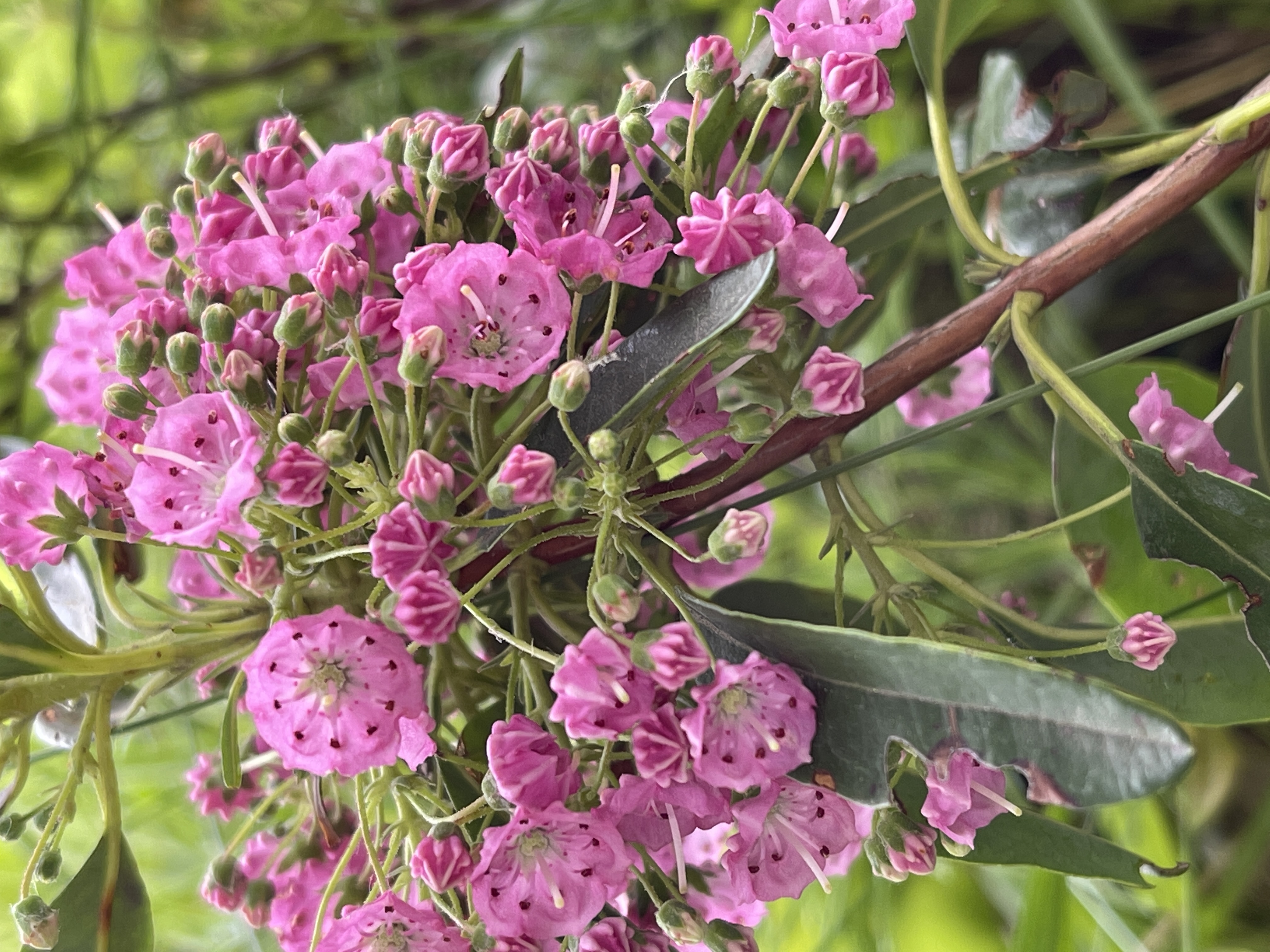Sheep Laurel on:
[Wikipedia]
[Google]
[Amazon]
 ''Kalmia angustifolia'' is a flowering
''Kalmia angustifolia'' is a flowering
 ''Kalmia angustifolia'' is a flowering
''Kalmia angustifolia'' is a flowering shrub
A shrub or bush is a small to medium-sized perennial woody plant. Unlike herbaceous plants, shrubs have persistent woody stems above the ground. Shrubs can be either deciduous or evergreen. They are distinguished from trees by their multiple ...
in the family
Family (from ) is a Social group, group of people related either by consanguinity (by recognized birth) or Affinity (law), affinity (by marriage or other relationship). It forms the basis for social order. Ideally, families offer predictabili ...
Ericaceae
The Ericaceae () are a Family (biology), family of flowering plants, commonly known as the heath or heather family, found most commonly in acidic and infertile growing conditions. The family is large, with about 4,250 known species spread acros ...
, commonly known as sheep laurel. It is distributed in eastern North America from Ontario and Quebec south to Virginia. It grows commonly in dry habitats in the boreal forest
Taiga or tayga ( ; , ), also known as boreal forest or snow forest, is a biome characterized by pinophyta, coniferous forests consisting mostly of pines, spruces, and larches. The taiga, or boreal forest, is the world's largest land biome. I ...
, and may become dominant over large areas after fire or logging. Like many plant species of infertile habitats it has evergreen
In botany, an evergreen is a plant which has Leaf, foliage that remains green and functional throughout the year. This contrasts with deciduous plants, which lose their foliage completely during the winter or dry season. Consisting of many diffe ...
leaves and mycorrhiza
A mycorrhiza (; , mycorrhiza, or mycorrhizas) is a symbiotic association between a fungus and a plant. The term mycorrhiza refers to the role of the fungus in the plant's rhizosphere, the plant root system and its surroundings. Mycorrhizae play ...
l associations with fungi. It is also found in drier areas of peat bogs
A bog or bogland is a wetland that accumulates peat as a deposit of dead plant materials often mosses, typically sphagnum moss. It is one of the four main Wetland#Types, types of wetlands. Other names for bogs include mire, mosses, quagm ...
.
Description
The attractive, small, deep crimson-pink flowers are produced in early summer. Each has five sepals, with a corolla of five fused petals, and ten stamens fused to the corolla. They are pollinated by bumblebees and solitary bees. Each mature capsule contains about 180 seeds.Hall, I. V., Jackson, L. P. and Everett, C. F. 1973. The biology of Canadian weeds. 1. ''Kalmia angustifolia'' L. Canadian Journal of Plant Science 53: 865–873. In the wild the plant may vary in height from . New shoots arise from dormant buds on buried rhizomes. This process is stimulated by fire. The narrowevergreen
In botany, an evergreen is a plant which has Leaf, foliage that remains green and functional throughout the year. This contrasts with deciduous plants, which lose their foliage completely during the winter or dry season. Consisting of many diffe ...
leaves, pale on the underside, have a tendency to emerge from the stem in groups of three. The Latin specific epithet
In Taxonomy (biology), taxonomy, binomial nomenclature ("two-term naming system"), also called binary nomenclature, is a formal system of naming species of living things by giving each a name composed of two parts, both of which use Latin gramm ...
''angustifolia'' means "narrow-leaved". A peculiarity of the plant is that clusters of leaves usually terminate the woody stem, for the flowers grow in whorls or in clusters below the stem apex.
Cultivation
''Kalmia angustifolia'' is cultivated as an ornamental garden shrub. It prefers a moist,acidic
An acid is a molecule or ion capable of either donating a proton (i.e. hydrogen cation, H+), known as a Brønsted–Lowry acid, or forming a covalent bond with an electron pair, known as a Lewis acid.
The first category of acids are the ...
soil in partial shade. The species has gained the Royal Horticultural Society
The Royal Horticultural Society (RHS), founded in 1804 as the Horticultural Society of London, is the UK's leading gardening charity.
The RHS promotes horticulture through its five gardens at Wisley (Surrey), Hyde Hall (Essex), Harlow Carr ...
's Award of Garden Merit
The Award of Garden Merit (AGM) is a long-established award for plants by the British Royal Horticultural Society (RHS). It is based on assessment of the plants' performance under UK growing conditions.
It includes the full range of cultivated p ...
. Numerous cultivars
A cultivar is a kind of cultivated plant that people have selected for desired traits and which retains those traits when propagated. Methods used to propagate cultivars include division, root and stem cuttings, offsets, grafting, tissue cult ...
have been selected for garden use, of which ''K. angustifolia'' f. ''rubra'', with rich red flowers, has also won the award.
Toxicity
''Kalmia'' contains aglycoside
In chemistry, a glycoside is a molecule in which a sugar is bound to another functional group via a glycosidic bond. Glycosides play numerous important roles in living organisms. Many plants store chemicals in the form of inactive glycosides. ...
, known as andromedotoxin. It is poisonous to mammals. Hence, it can be unwelcome in pastures. Several of its folk-names testify to the plant's toxicity: 'lamb-kill', 'sheep kill', 'calf-kill', 'pig laurel', 'sheep-laurel' and 'sheep-poison'. It is also known as narrow-leaved laurel and dwarf laurel.
References
{{Taxonbar, from=Q3192236 angustifolia Flora of the Northeastern United States Flora of the Southeastern United States Flora of the Great Lakes region (North America) Flora of Eastern Canada Flora of Saint Pierre and Miquelon Flora of the Appalachian Mountains Plants described in 1753 Taxa named by Carl Linnaeus Flora without expected TNC conservation status